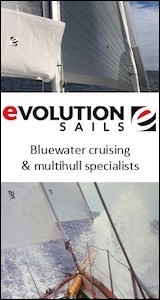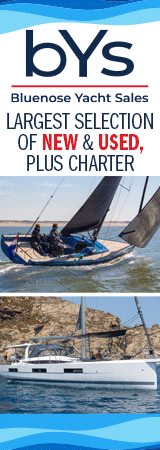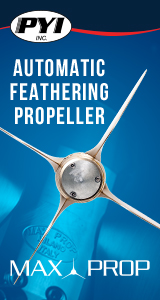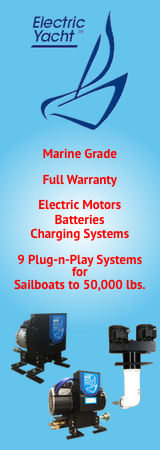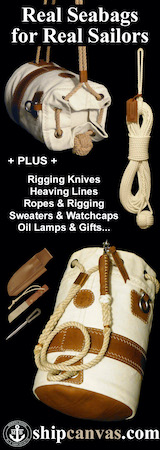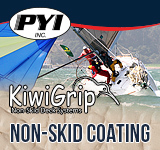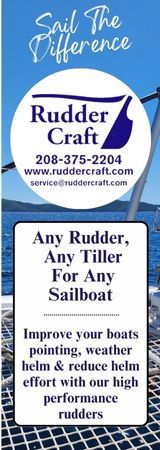Forum Replies Created
-
AuthorPosts
-
Ken A Heaton
Participant…and of course:
“Lancer Yacht Corp. (USA)
1974 – 1986
Lancer Yacht Corporation, based in Irive California, USA, was founded by Richard Valdez, former president of Columbia Yachts. The company manufactured a line of sailing yachts and motorsailers from 25’ to 65’ (14 models). The Lancer motorsailers (designed by Herb David) were unique in that that they were equipped with single or twin engines making them capable of speeds in excess of 15 knots under power, and yet perform tolerably well under sail.
Lancers were built at a facility shared with Endeavor Yachts, another company founded by Valdez.
Lancer was sold to Bally, a New York Stock Exchange company, in 1983. The Lancer name and much of the tooling were sold to Newport Offshore Yachts of California but it is thought that no Lancers were built after 1986.”Ken A Heaton
Participant“Started in Irvine, California, sailboat builder Lancer Yachts first model was a 36-foot fiberglass vessel. Adding various other sized sailboats that would cover a range from 25 to 65 feet, Lancer Yachts became quite prolific during the second part of the 1970s into the 1980s. Lancer Yachts was purchased in 1983 by casino gaming equipment provider Bally Manufacturing Company. Bally would three years later sell the Lancer Yachts to Newport Offshore Yachts who decided to retire the Lancer Yachts brand.”
Ken A Heaton
ParticipantHave you seen this article in Practical Sailor? A quote:
This maximum-size trailer sailer shows the compromises needed to haul a boat on the road.
Lancer Yachts was an offshoot of the remarkably complex and inbred family tree known as California boatbuilding. Lancer principals Dick Valdes and Maury Threinen founded Columbia Yachts back in the late 1950s, built boats under contract for Islander, sold Columbia to Whittaker, and got back into the sailboat business in 1974 by forming Lancer Yachts.
The names that passed through this Columbia connection read like a who’s who of fiberglass boatbuilding. Designer Bruce King was a draftsman for Columbia. Ericson founder Kurt Densmore was a Columbia plant manager, and Frank Butler—owner of Catalina Yachts, probably the biggest sailboat builder in the country—ran the Coronado division of Columbia.
It’s no wonder that many California-built boats from the 1970s bear a strong family resemblance: they’re practically first cousins.
Lancer Yachts built a rather astonishing variety of boats before going out of business in 1986. None of the Lancers can be considered a classic. Rather, the boats were a mirror of their times, and this constant change may have been what finally did in the company.
In 1983 alone, Lancer offered 13 different boats ranging in size from a 25’ trailer sailer to a 65’ motorsailer. The sheer variety of models reduces efficiency in production, and to stay competitive in price, you must shave profit margins closer and closer.
Perhaps the most interesting boats ever produced by Lancer were those in a series of high-performance motorsailers built in the mid-1980s. These boats ranged from the 25’ Powersailer up to the 65’ Motorsailer, and were characterized by huge engines relative to their displacements in an attempt to get both powerboat and sailboat performance out of the same hull. The Powersailer 27, for example, was designed for outboards of up to 200 hp. The 44’ high-performance motorsailer had engine options up to twin 200 hp turbocharged diesels.
The idea was to capture a crossover market which really wanted a powerboat, but felt that sailboats were the way to go due to real or imagined fuel shortages.
Needless to say, these boats had a somewhat limited appeal, and the return of cheap oil spelled their doom.”
November 2, 2019 at 2:09 am in reply to: What are the meanings of the capsize ratio and the comfort ratio figures? #83125Ken A Heaton
ParticipantMotion Comfort Ratio was developed by Boat Designer Ted Brewer. The formula predicts the speed of the upward and downward motion of the boat as it encounters waves and swells. The faster the motion the more uncomfortable the passengers. Thus, the formula predicts the overall comfort of a boat when it is underway.
A more complete explanation is here: https://wavetrain.net/2011/10/15/crunching-numbers-brewer-comfort-ratio/
-
AuthorPosts
